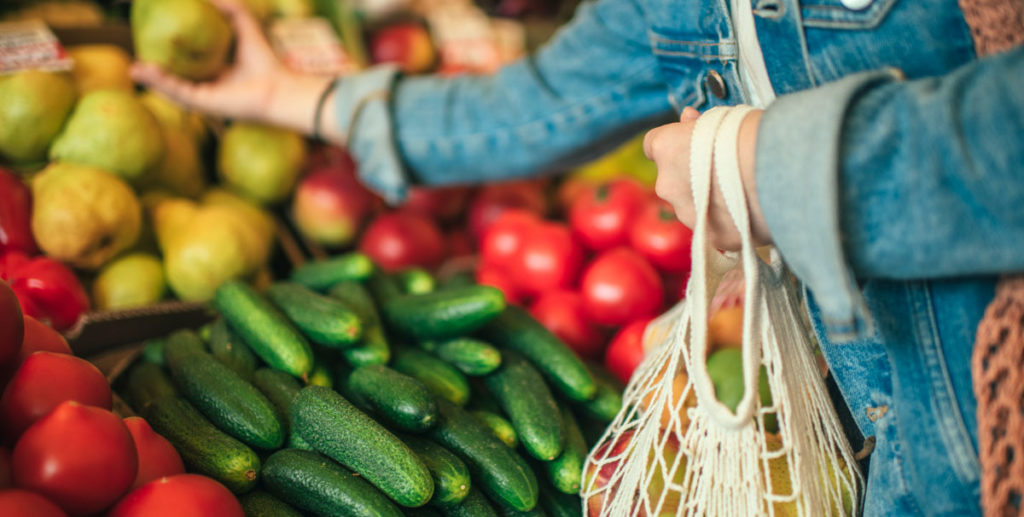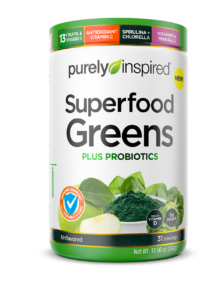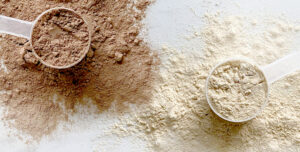Our outfits aren’t the only thing that should be changing with the weather. We should also be changing our diets, too. That’s because seasonal food is fresher, tastier, and more nutritious than food consumed outside of season.
So, while we may have enjoyed eating summer favorites like sweet corn, tomatoes, watermelon, and strawberries on warm summer nights, it’s now time to say goodbye to those fruits and veggies and hello to delicious and nutritious fall foods such as apples, pears, beets, and Brussels sprouts.
What Are The Benefits Of Eating Seasonal Food?
Seasonal food is produce that’s purchased and consumed around the time that it’s harvested. From a health perspective, seasonal fruits and veggies retain more nutrients than those that have been shelved since seasonal produce will have had more sun exposure, which will help preserve antioxidants within the plant. In fact, research has shown that fruits and vegetables grown locally in season have significantly higher levels of important nutrients.
On the other hand, fruits and vegetables that are out of season are usually less flavorful because they begin to lose their nutritional value as soon as they’ve been harvested. This is important since fresh fruits and vegetables contain antioxidants. For example, the vitamin C content in fresh fruits and veggies is higher than that of out of season fruits and veggies.
In addition to nutritional benefits, there’s a cost benefit, as well. Fruits and vegetables offered at local farmer’s markets during their specific seasons tend to be less expensive. Plus, purchasing locally grown foods will help support local farms, and maintain farmland and open space in your community. Therefore, purchasing in season fruits and vegetables at your local farmer’s market is a win-win for you and your community.
Get More Greens Into Your Day
In Season Fruits & Vegetables
If you’re not sure where you can purchase local, seasonal produce near you, check out this farmer’s market directory that lists farmer’s markets by state. Then when you’re at the farmer’s market (or your local grocery store), shop for these 10 essential fall foods.
Fall Fruits
Apples
In season from late summer through late fall, apples are an excellent source of both insoluble and soluble fiber, phytochemicals, and vitamin C. One of the season’s healthiest choices, apples are rich in quercetin and pectin.One medium apple provides about 95 calories, 0 grams of fat, 1 gram of protein, 25 grams of carbohydrates, 19 grams of naturally occurring sugar, and 3 grams of fiber.
When going apple picking or selecting apples at the farmer’s market or the grocery store, look for apples that are solid with no mushy spots, bruises, or holes. Then you can either eat the apples raw (after washing them), sauté them for breakfast, use them in pies, or make sauce out of your apples. You can search this apple orchards directory to find an orchard near you.
Cranberries
Cranberries are at their peak from mid-to-late fall when they’re harvested from bogs. A rich source of manganese, copper, and vitamins C, E, and K1, fresh cranberries are nearly 90% water, and the rest is mostly carbs and fiber. One cup of raw, unsweetened cranberries provides about 45 calories, 0.4 grams of protein, 12.2 grams of carbohydrates, 4 grams of sugar, 4.6 grams of fiber, and 0.1 grams of fat.
Since raw cranberries are tart, they’re rarely eaten raw. Typically, cranberries are best used in sauces, to make baked goods, or as a yogurt or oatmeal topping when sauteed with other sweet fall fruits like apples and pears. And when purchasing cranberries, choose hard berries with no visible brown spots.
Figs
Available late fall, figs are known to satisfy sweet cravings.Figs have been associated with health and prosperity since ancient times. In addition to being a naturally fat-free and cholesterol-free food, figs are also an excellent source of vitamins A and C, calcium, iron, potassium, and magnesium. One medium fig contains 37 calories, 0 grams of fat, 1 milligram of sodium, 10 grams of carbohydrates, 8 grams of sugar, and 0 grams of protein.
Figs can either be eaten fresh, halved and tossed into a salad, incorporated into a sandwich for an added crunch and extra flavor, or used to sweeten desserts. By touch, ripe figs should be soft when gently squeezed. Unripe figs will remain firm.
Grapes
Packed with many important vitamins and minerals, grapes are a great source of vitamins C, K, and B6, copper, potassium, antioxidants, and resveratrol. One cup of red or green grapes contains 104 calories, 27.3 grams of carbohydrates, 1.1 grams of protein, 0.2 grams of fat, and 1.4 grams of fiber.
Grapes boast their best flavor in fall and are pretty easy to incorporate into your diet. You can either eat grapes raw (after washing them), put them in the freezer and eat them later for a healthy sweet treat, or drink grape juice. When picking grapes, steer clear of wilted stems and wrinkled grapes.
Pears
One of the most popular fruits in the world, pears are an excellent source of fiber, copper, potassium, and vitamins C and K. They’re also sodium free, fat free, and cholesterol free. A medium-sized pear provides 101 calories, 1 gram of protein, 27 grams of carbohydrates, and 6 grams of fiber.
When selecting pears, it’s best to pick firm pears (without any nicks) and then allow them to ripen. Once your pears are soft, you can either eat them raw (after washing) within five days or wrap each individual fruit in paper and then store your wrapped pears in the refrigerator. You can also use pears to make sauces, baked goods, or simply add them to salads.
Fall Vegetables
Beets
These nutritious root vegetables are becoming more and more popular of late and are often the star ingredient in smoothies and juices. In addition to enjoying pureed beets in your smoothies, you can also roast beets with olive oil, or eat them raw (either warm or cold) as a side dish after washing them. When selecting beets, choose firm and smooth beets with healthy tops.
A ½-cup serving of sliced beets contains 35 calories, 1 gram of protein, 0 grams of fat, 8 grams of carbohydrates, 1 gram of fiber, 6 grams of sugar, 0.4 milligrams of iron, and 250 milligrams of sodium. Beets are also rich in a variety of vitamins and minerals including potassium, magnesium, fiber, phosphorus, iron, vitamins A, B, and C, beta-carotene, and folic acid.
Brussels Sprouts
The peak season for Brussels sprouts is from September to mid-February. In fact, Brussels sprouts are actually sweeter when harvested after a frost. One cup of cooked Brussels sprouts contains 56.2 calories, 0.78 grams of fat, a little over 11 grams of carbohydrates, and almost 4 grams of protein.
Brussels sprouts are a nutritious and tasty side dish that can be steamed or roasted with olive oil. When shopping for Brussels sprouts, pick firm and solid heads. Then refrigerate your Brussels sprouts in perforated bags.
Cauliflower
A cruciferous vegetable that’s naturally high in fiber and B-vitamins, cauliflower provides antioxidants and phytonutrients , fiber , and choline . One cup of chopped raw cauliflower contains 27 calories, 2 grams of protein, 0.3 grams of fat, 5 grams of carbohydrates, 24 milligrams of calcium, 320 milligrams of potassium, and also provides 77% of your daily vitamin C needs and 20% of your daily vitamin K needs.
Choose firm, smooth heads with no black spots when you’re shopping for cauliflower. To prevent browning, wrap your cauliflower in a damp cloth or a paper towel. Cauliflower is a great substitute for potatoes since it can be mashed. Or you can try this Cauliflower Pizza Crust Recipe at your next family pizza night!
Spaghetti Squash
Spaghetti squash is a large, yellow, melon-shaped food that’s typically harvested in early fall. It’s in the same family as other winter squashes and can be used in a variety of dishes like stews or scraped out to create spaghetti-like strands (hence the name!). When shopping for spaghetti squash, look for solid squashes with no cuts or bruising. Then store your spaghetti squash in a cool, dark place.
In terms of nutrition, spaghetti squash is a great source of vitamins C and B6, beta-carotene, fiber, and antioxidants. Spaghetti squash is also both filling and low in calories. One cup of cooked spaghetti squash provides 42 calories, 10 grams of carbohydrates, 2.2 grams of fiber, 1 gram of protein, and 0.5 grams of fat. It also contains small amounts of thiamine, magnesium, folate, calcium, and iron.
Sweet Potatoes
These sweet, starchy root vegetables are in season from late summer through the end of fall. Loaded with carotenoids, vitamin E, potassium, and copper, sweet potatoes don’t only taste great, they’re also highly nutritious. One cup of baked sweet potato with skin provides 180 calories, over 41 grams of carbohydrates, 4 grams of protein, 0.3 grams of fat, and 6.6 grams of fiber. It also offers 769% of the Daily Value (DV) of vitamin A, 65% of the DV of vitamin C, and 50% of the DV of manganese.
Since they have a rich, sweet flavor, sweet potatoes can be baked whole, roasted, or used in stews or desserts. When selecting sweet potatoes, choose solid, unbruised potatoes and then store them in a cool, dry place. However, it’s important to avoid storing your sweet potatoes in the refrigerator since they will develop a hard center and then have a bad taste.
*The links used in this article are being provided as a convenience and for informational purposes only; they do not constitute an endorsement or an approval by Iovate Health Sciences International Inc. or any of its affiliates (“Iovate”) of any of the products, services or opinions of the corporation or organization or individual. Iovate bears no responsibility for the accuracy, legality or content of the external site or for that of subsequent links. Contact the external site for answers to questions regarding its content.








